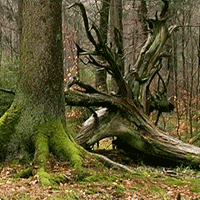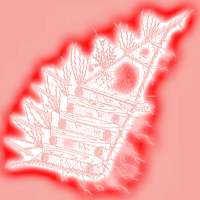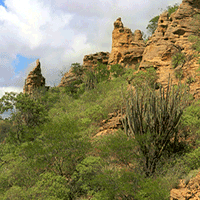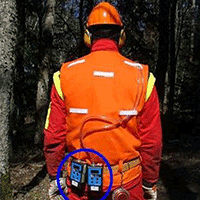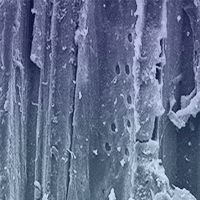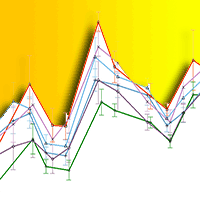
Culturable fungi associated with wood decay of Picea abies in subalpine forest soils: a field-mesocosm case study
M Oliveira Longa Claudia (1) , Davide Francioli (2), Maria Gómez-Brandón (3-4), Judith Ascher-Jenull (5-6), Tommaso Bardelli (5-6), Giacomo Pietramellara (6), Markus Egli (7), Giacomo Sartori (8), Heribert Insam (5)
iForest - Biogeosciences and Forestry, Volume 11, Issue 6, Pages 781-785 (2018)
doi: https://doi.org/10.3832/ifor2846-011
Published: Nov 28, 2018 - Copyright © 2018 SISEF
Short Communications
Abstract
Fungi are the principal wood decomposers in forest ecosystems and their activity provides wood necromass to other living organisms. However, the wood decay mechanisms and the associated microbial community are largely unknown, especially in Alpine areas. In this study, the culturable fraction of fungal communities associated with the decomposition of Norway spruce (Picea abies [L.] Karst) deadwood in subalpine forest soils were determined using microbiological methods coupled with molecular identification. Fungal communities were evaluated using in-field mesocosms after one year of exposition of P. abies wood blocks along an altitudinal gradient ranging from 1200 up to 2000 m a.s.l. comprising eight subalpine sites, four of them located at north- and other four at south-facing slopes. Although many saprotrophic species were isolated from the wood blocks, several white-rot species as the pathogenic fungi Armillaria cepistipes and Heterobasidion annosum, along with soft-rot fungi such as Lecytophora sp. were identified. Our results further indicated that the wood-inhabiting fungal community was mainly influenced by topographic features and by the chemical properties of the wood blocks, providing first insights into the effect of different slope exposure on the deadwood mycobiome in the subalpine forest ecosystem.
Keywords
Wood-inhabiting Fungi, Basidiomycota, Subalpine Forest, Wood Decomposition, Norway Spruce, Slope Exposure
Authors’ Info
Authors’ address
Department of Sustainable Agroecosystems and Bioresources, Research and Innovation Centre, Fondazione Edmund Mach, v. E. 1, 38010, San Michele all’Adige (Italy)
Plant Ecology and Nature Conservation Group, Wageningen University, P.O. Box 47, 6700AA Wageningen (The Netherlands)
Institute of Microbiology, University of Innsbruck, Technikerstraβe 25d, 6020 Innsbruck (Austria)
Departamento de Ecología y Biología Animal, Universidad de Vigo, Vigo 36310 (Spain)
Tommaso Bardelli
Heribert Insam
Institute of Microbiology, University of Innsbruck, Technikerstraβe 25d, 6020 Innsbruck (Austria)
Tommaso Bardelli
Giacomo Pietramellara
Department of Agrifood and Environmental Science, University of Florence, p.le delle Cascine 18, 50144 Florence (Italy)
Department of Geography, University of Zürich, Winterthurerstrasse 190, 8057 Zürich (Switzerland)
Museo delle Scienze (MUSE), c.so del Lavoro e della Scienza 3, 38122 Trento (Italy)
Corresponding author
Paper Info
Citation
Oliveira Longa Claudia M, Francioli D, Gómez-Brandón M, Ascher-Jenull J, Bardelli T, Pietramellara G, Egli M, Sartori G, Insam H (2018). Culturable fungi associated with wood decay of Picea abies in subalpine forest soils: a field-mesocosm case study. iForest 11: 781-785. - doi: 10.3832/ifor2846-011
Academic Editor
Alberto Santini
Paper history
Received: May 09, 2018
Accepted: Oct 01, 2018
First online: Nov 28, 2018
Publication Date: Dec 31, 2018
Publication Time: 1.93 months
Copyright Information
© SISEF - The Italian Society of Silviculture and Forest Ecology 2018
Open Access
This article is distributed under the terms of the Creative Commons Attribution-Non Commercial 4.0 International (https://creativecommons.org/licenses/by-nc/4.0/), which permits unrestricted use, distribution, and reproduction in any medium, provided you give appropriate credit to the original author(s) and the source, provide a link to the Creative Commons license, and indicate if changes were made.
Web Metrics
Breakdown by View Type
Article Usage
Total Article Views: 46097
(from publication date up to now)
Breakdown by View Type
HTML Page Views: 38583
Abstract Page Views: 3768
PDF Downloads: 2811
Citation/Reference Downloads: 9
XML Downloads: 926
Web Metrics
Days since publication: 2576
Overall contacts: 46097
Avg. contacts per week: 125.26
Citation Metrics
Article Citations
Article citations are based on data periodically collected from the Clarivate Web of Science web site
(last update: Mar 2025)
Total number of cites (since 2018): 5
Average cites per year: 0.63
Publication Metrics
by Dimensions ©
Articles citing this article
List of the papers citing this article based on CrossRef Cited-by.
References
Effects of slope exposure on soil physico-chemical and microbiological properties along an altitudinal climosequence in the Italian Alps. Science of the Total Environment 575: 1041-1055.
CrossRef | Gscholar
Soil attributes and microclimate are important drivers of initial deadwood decay in sub-alpine Norway spruce forests. Science of the Total Environment 569- 570: 1064-1076.
CrossRef | Gscholar
Large-scale fungal diversity assessment in the Andean Yungas forests reveals strong community turnover among forest types along an altitudinal gradient. Molecular Ecology 23: 2452-2472.
CrossRef | Gscholar
Physico-chemical and microbiological evidence of exposure effects on Picea abies - Coarse woody debris at different stages of decay. Forest Ecology and Management 391: 376-389.
CrossRef | Gscholar
Time since death and decay rate constants of Norway spruce and European larch deadwood in subalpine forests determined using dendrochronology and radiocarbon dating. Biogeosciences 13: 1537-1552.
CrossRef | Gscholar
Changes within a single land-use category alter microbial diversity and community structure: Molecular evidence from wood-inhabiting fungi in forest ecosystems. Journal of Environmental Management 139: 109-119.
CrossRef | Gscholar
Extensive sampling of basidiomycete genomes demonstrates inadequacy of the white-rot/brown-rot paradigm for wood decay fungi. Proceedings of the National Academy of Sciences USA 111: 9923-9928.
CrossRef | Gscholar
Saproxylic invertebrates and their conservation. Nature and Environment, Council of Europe, Strasbourg, France, pp. 78.
Gscholar
Amplification and direct sequencing of fungal ribosomal RNA genes for phylogenetics. In: “PCR protocols: a guide to methods and applications” (Innis, MA, Gelfand DH, Sninsky JJ, White TJ eds). Academic Press, Inc., New York, USA, pp. 315-322.
CrossRef | Gscholar
World reference base for soil resources. World Soil Resources Reports, vol. 84. FAO, Rome, Italy.
Gscholar

